All round
Why Wasn’t Prince Philip a King?
Prince Philip died at the age of 99 on Friday morning, according to Buckingham Palace. In a release, the royal family said, “It is with deep sorrow that Her Majesty The Queen announces the death of her beloved husband, His Royal Highness The Prince Philip, Duke of Edinburgh. His Royal Highness passed away peacefully this morning at Windsor Castle.
He was the longest-serving royal consort in British history, having served by Queen Elizabeth II’s side for more than 70 years. Following historical precedence and royal custom, he was given the title Prince Philip rather than King Philip for his important part. We’re delving further into his title and its meaning as the world honors him.
Prince Philip was not the King of England, which is one of the most intriguing things regarding him. He was, in reality, Prince Philip (also known as the Duke of Edinburgh). When Prince William becomes King, his wife, Kate, will be referred to as “Queen” or “Queen Consort” for the duration of William’s reign.
Prince Philip married Queen Elizabeth II in 1947, and she became queen in 1952 after her father, King George VI, died. She later bestowed the title of prince on her husband on their 10th anniversary.
When Philip married the Queen, he gave up his title as Prince of Greece and Denmark and became the Duke of Edinburgh. Philip, though, did not become King of England when Queen Elizabeth took the throne, due to a long-standing royal family tradition that a man who marries a ruling queen is only referred to as a Prince Consort.
Trending:
Since the title of King is only granted to a ruler who inherits the throne and may rule, a reigning queen’s spouse is referred to as a Prince Consort. As a result, Prince Charles, who will replace Queen Elizabeth, will be crowned King.
This wasn’t meant to be a dig at Prince Philip; he wasn’t meant to be addressed as king or prince. His title was Duke of Edinburgh until February 22, 1957 when the palace released a statement: “The Queen has been pleased by Letters Patent under the Great Seal of the Realm bearing date 22nd February, 1957, to give and grant unto His Royal Highness the Duke of Edinburgh, K.G., K.T., G.B.E., the style and titular dignity of a Prince of the United Kingdom of Great Britain and Northern Ireland, Whitehall
So, why didn’t Philip ever succeed to the throne? I t all comes down to royal protocol. The partners of reigning British monarchs are referred to as consorts; but, unlike the wives of rulers, the husbands of queens have never been referred to as king consorts. Prince Albert was given the title of prince consort by Queen Victoria, but Philip, the first male consort after Albert, was given the title of Prince of the United Kingdom instead. According to Town & Country, the tradition stems from the royal family’s ancient patriarchy, in which kings must be rulers but queens may only be symbolic figures.
When a male in the royal bloodline marries
His wife assumes the feminine version of his title. As a result, after Prince William married Kate Middleton and became Duke of Cambridge, Kate Middleton became Duchess of Cambridge, and when William becomes King, Kate’s title will be changed to fit William’s. As Queen Elizabeth II’s father, George VI, became King, his wife’s title was changed to “Queen Consort,” though she was still commonly referred to as “Queen Elizabeth” (having been born Elizabeth Angela Marguerite Bowes-Lyon, not to be confused with Queen Elizabeth I of England, daughter of Henry VIII and Anne Boleyn). When George died, Elizabeth II rose to the throne, and her mother was dubbed “Queen Mother.”
When a female in the royal bloodline marries
According to Marlene Koenig, a royal historian and author of the Royal Musings site, her husband is not entitled to take the male form of his wife’s title. That’s why when Princess Eugenie and her spouse, Jack Brooksbank, married in October 2018, he was still referred to as “Mr. Jack Brooksbank.”
Philip was a Greek prince.
When he became a naturalized British citizen and renounced his royal titles to marry Princess Elizabeth (now recognised as Queen Elizabeth II). He also assumed the family name, Mountbatten, according to the official royal website.
Popular Posts:
- Queen’s damning reply to Prince Harry’s ‘what Meghan wants, Meghan gets’ outburst
- Here’s Why Meghan Markle Cannot File Harry Divorce In US
- Meghan Markle ‘escorted out of Prince Charles’ garden party’ in unearthed video
- Here’s Why Meghan Markle Cannot File Harry Divorce In US
- Prince Harry ‘kept asking for more money’ and Prince Charles got ‘fed up’
- Prince Charles ‘deliberately’ left Meghan out of Archie’s birthday message
- Prince Harry and Meghan ‘blamed staff when they didn’t get their way’
- Prince Harry has been ‘brainwashed’, says biographer
- Meghan Markle blogged about Kate’s wedding before claiming she ‘didn’t know much about royals’
- REVENGE: Beatrice’s pregnancy announcement total dig at Meghan Markle
- Damage is done: Prince Harry warned rift with Prince Charles is widening beyond repair
- Meghan Markle Oprah interview claims debunked by own blog post
- Queen and Charles deeply upset with Harry’s rants
- Prince Harry faces Backlash for podcast interview, Duke ‘making too much noise’
- Harry and Meghan are ‘trolling the world’ with hidden photos Archie, says their biographer
- Prince Harry Demands wife Meghan Markle Be Part Of Princess Diana’s 60th Birthday Tribute Or He Won’t Show
- Harry and Meghan are ‘trolling the world’ with hidden photos Archie, says their biographer
- Meghan Markle’s Plastic Surgery
- Meghan and Harry CAN’T do another bombshell interview – ‘Can only do one’
- How Kate Middleton earned the Queen’s respect
- William and Kate prove they are NOT ‘trapped’ despite Harry claims
- Kate Middleton ‘won’t be walked over by Meghan Markle,’ says Jenny Eclair
- Meghan ‘wasn’t too keen’ on living in smaller place than Kate and William after royal wedding
- Meghan Markle was a ‘failure’ in Hollywood, biographer reveals
- Meghan and Harry are trying to start ‘alternate woke Royal Family,’ Expert says















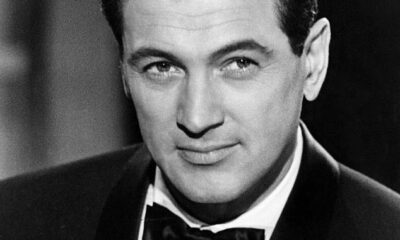

























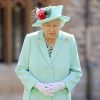

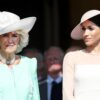
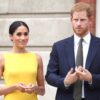




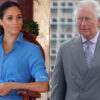


39 Comments